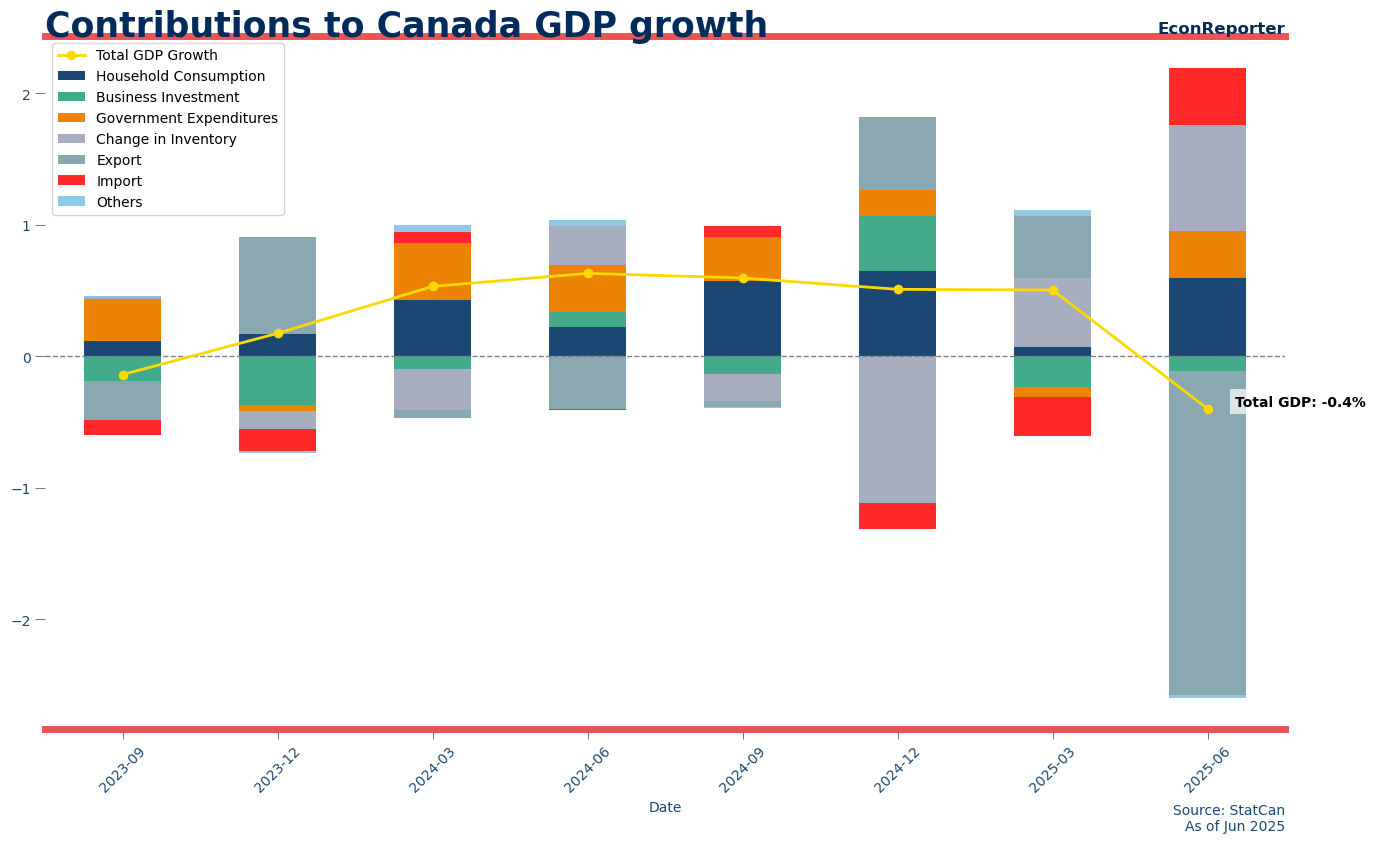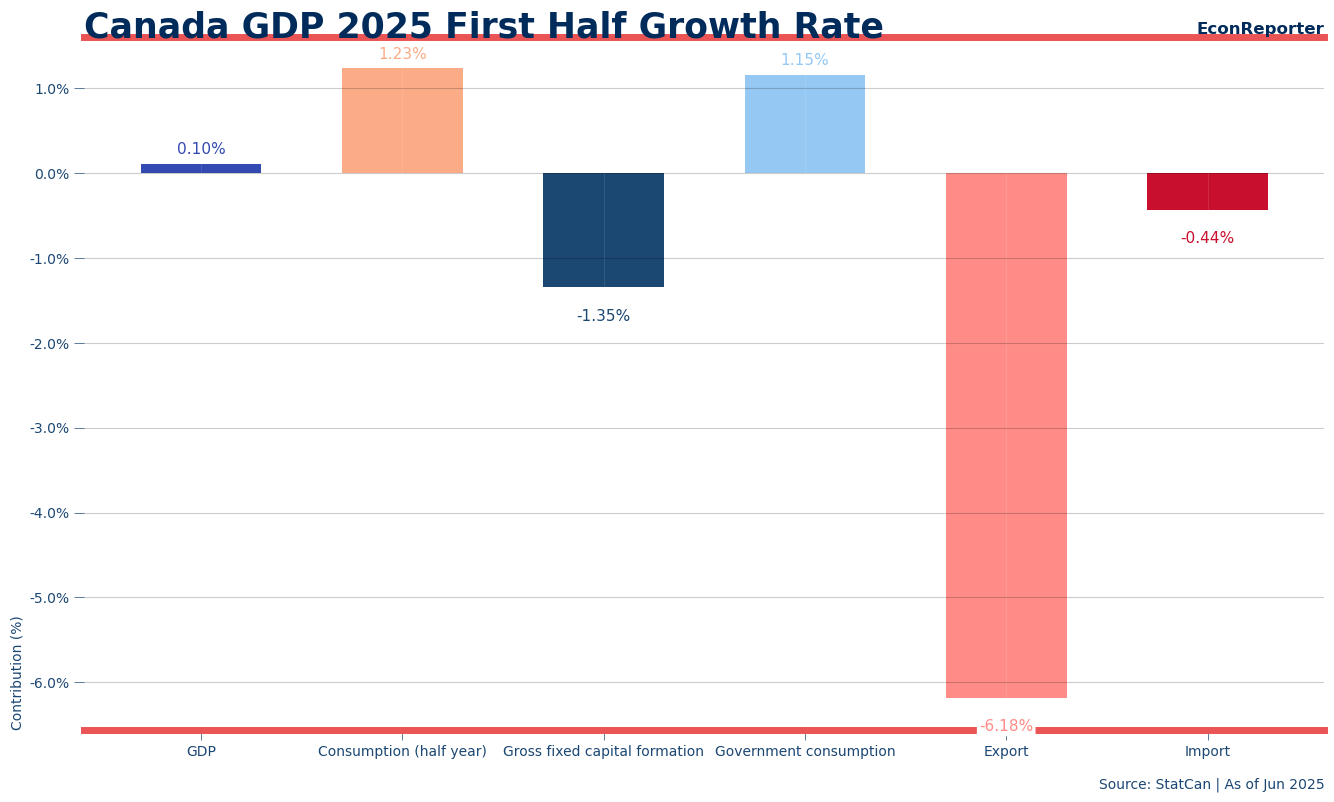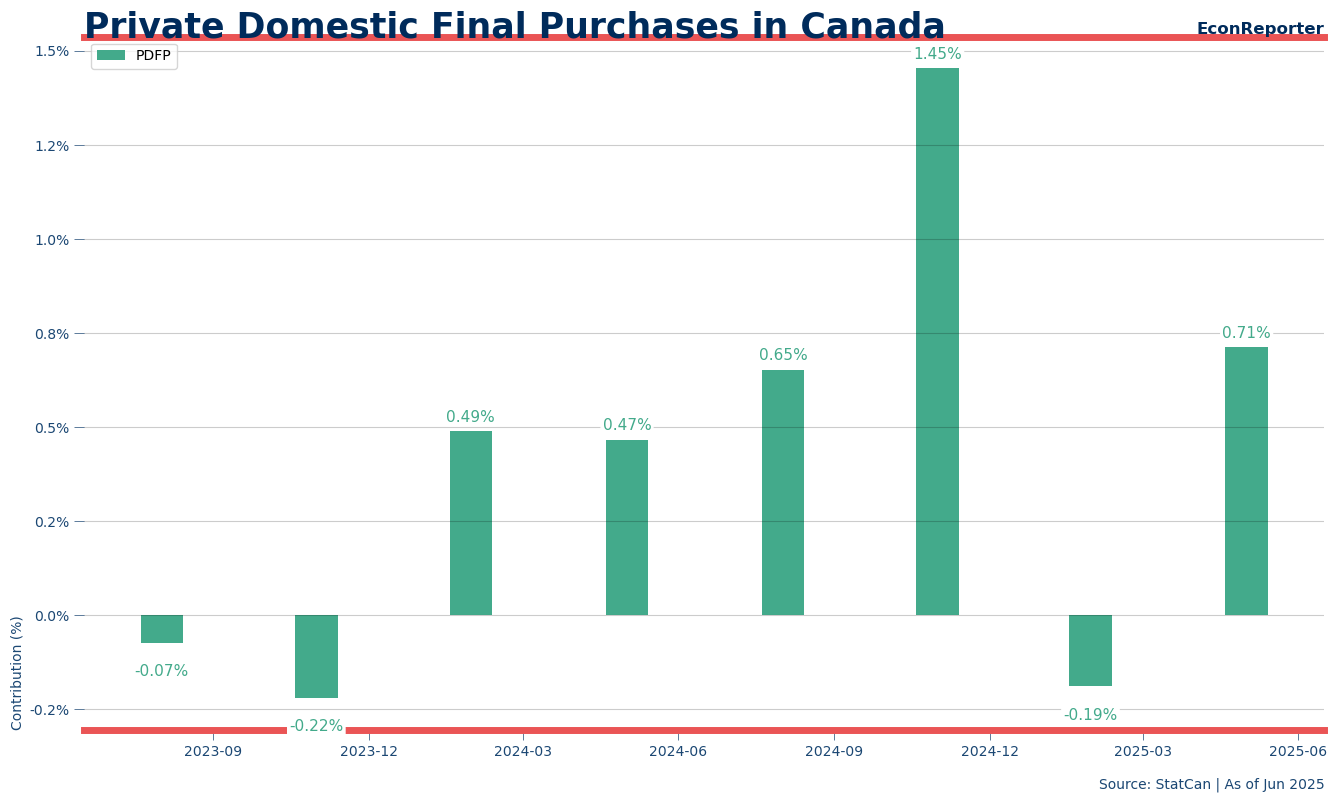Canada’s GDP contracted by 0.4% (or 1.6% annualized) over the second quarter, amid a 7.5% (26.7% annualized) drop in exports as the impact of US-imposed tariffs started to bite.
The following graph shows how different components contributed to the GDP growth rate and we can see a substantial (-2.5 ppts) negative contribution from export decline. Along with that, business investment also subtracted 0.11 ppt from growth.
Aside from these two, household consumption and government expenditures, change in inventory and imports all contributed positively in the GDP growth.
The Canada’s economic is clearly impacted by economic fluctuations in the US, where tariff drove many companies to push forward their import plans. This led to a significant rise in import in the Q1, which then reversed in the Q2.
Because these tariffs may have distorted the quarterly growth figures in Canada as well, observing the first two quarters as a whole provides can provide a better picture of the underlying strength of the Canadian economy.
Looking at the first half of 2025 combined, the drop in export was still substantial at 6.2%. However, with relatively resilient growth rate at both household consumption and government expenditures plus a slight drop in import (which is a plus for GDP calculation), the overall GDP still grew 0.1% (annualized 0.4%) over the six-month period.
Another method to gauge the economy’s core strength is to look at private domestic final purchases (PDFP) as an alternative measure focusing on local demand.
PDFP is the sum of personal consumption expenditures and gross private fixed investment, according to US Bureau of Economic Analysis’s definition. A similar measure can be calculated for Canada using Statistics Canada data on household consumption and business gross fixed capital formation.
This measure shows that the Canadian PDFP rebounded in Q2 to 0.71% (2.8% annualized), showing considerable resilience in domestic demand despite clear weakness in the external sector.
However, this domestic resilience is still contrasted with weakness in the labor market, where we saw the unemployment rate rose by 0.2 percentage points from Dec 2024, reaching 6.9% in July. So while the Canadian economic situation is clearly worsening, but it is also not too gloomy.
EconReporter is an independent journalism project striving to provide top-notch coverage on everything related to economics and the global economy.
💡 Follow us on Bluesky and Substack for our latest updates.💡














